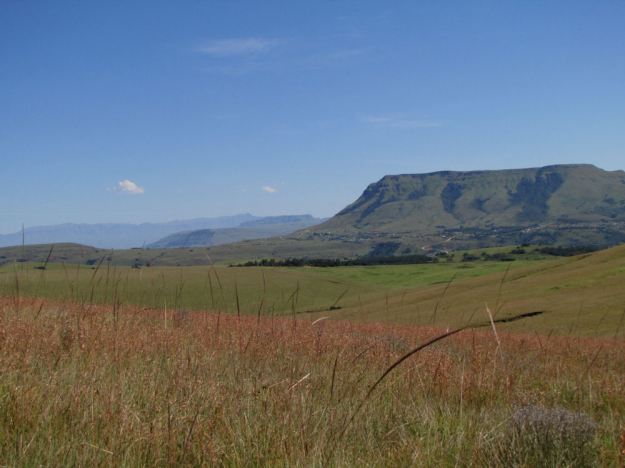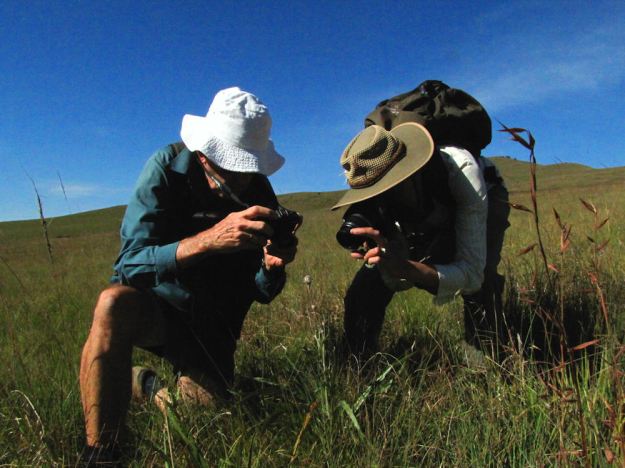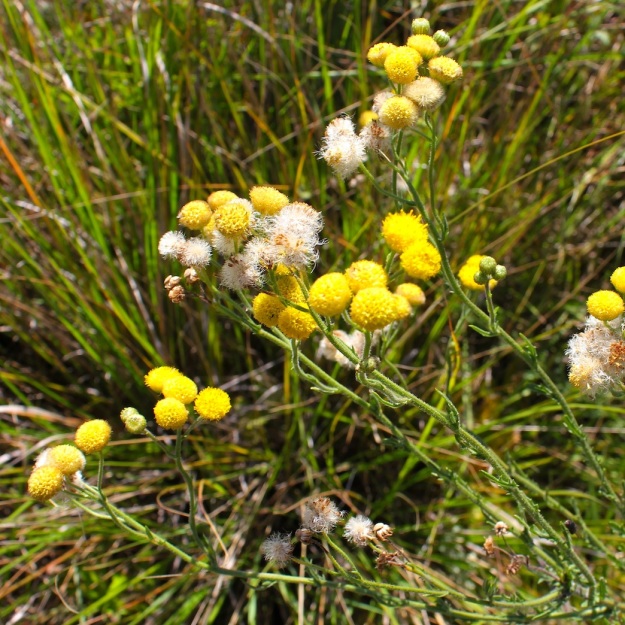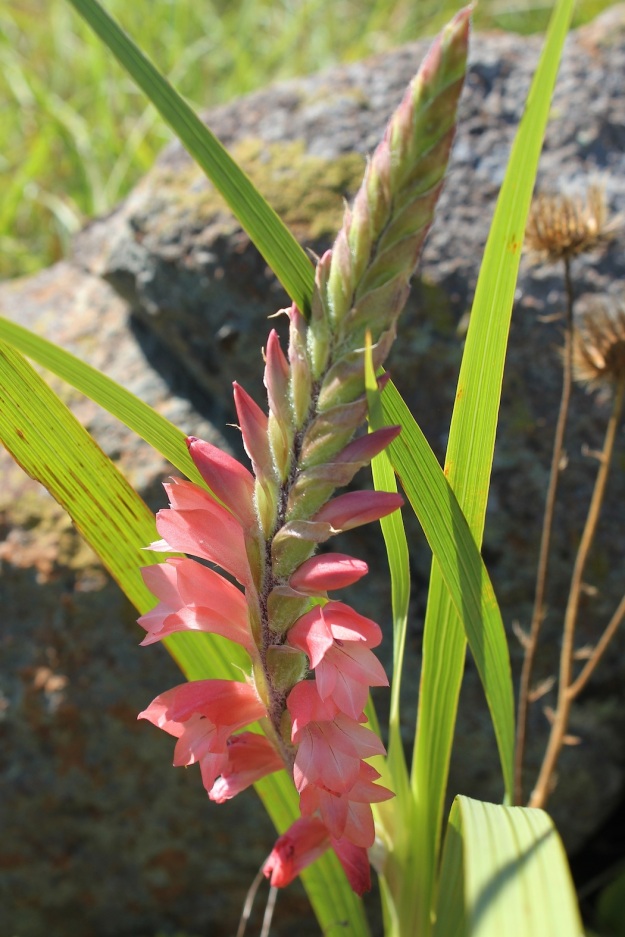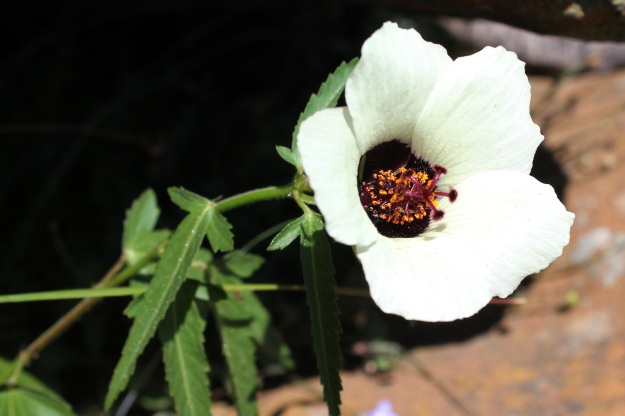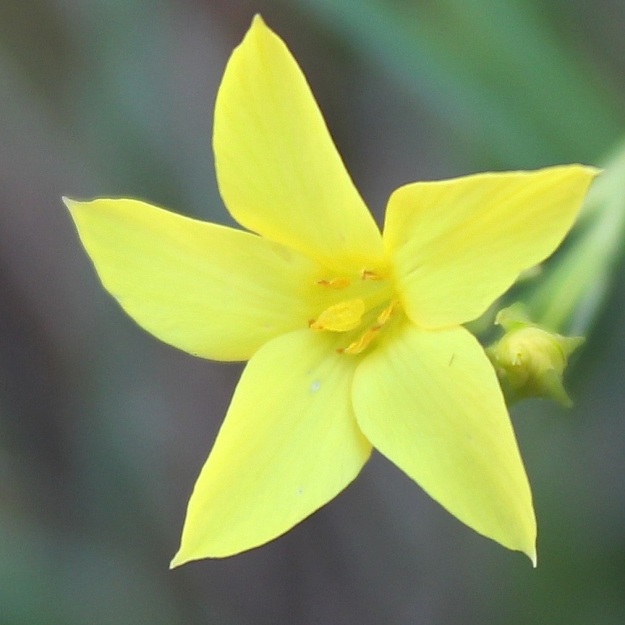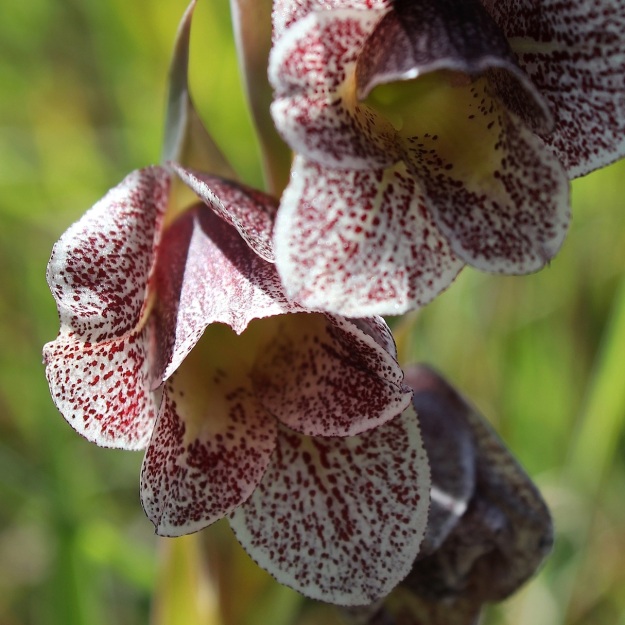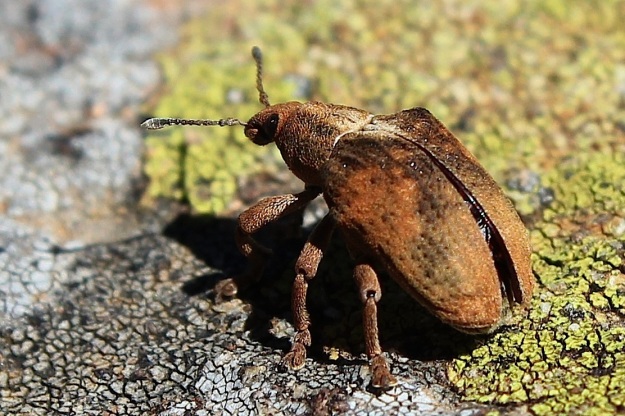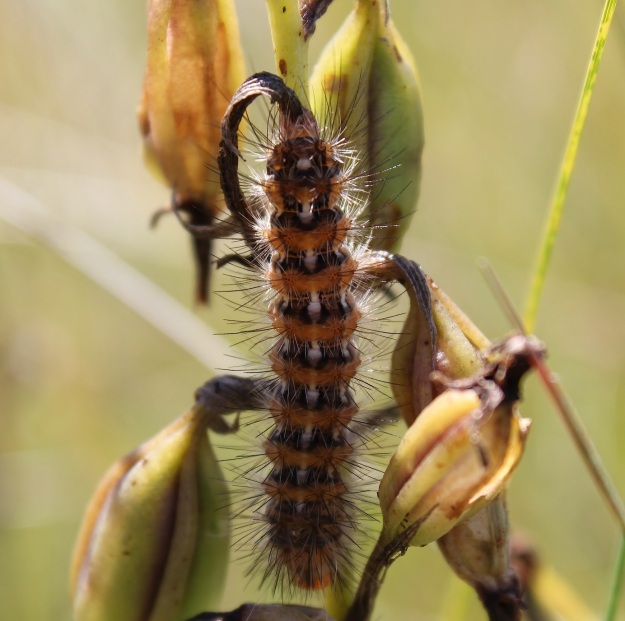The Midlands CREW headed out to Impendle Nature Reserve on 23 March to find some flowers and wander in the grasslands. Most of us had never visited before, so we were lucky that CREW stalwarts, Christeen Grant, Barbara and David Clulow came along to show us the way. They have had success during past seasons in finding Threatened Species – Asclepias biscuspis, Disa scullyi, Asclepias concinna, Schizoglossum bidens var hirtum, Asclepias woodii, Schizoglossum bidens subsp hirtum, Asclepias woodii, Bowiea volubilis subsp. volubilis and Sandersonia aurantiaca – in various locations in the Midlands.
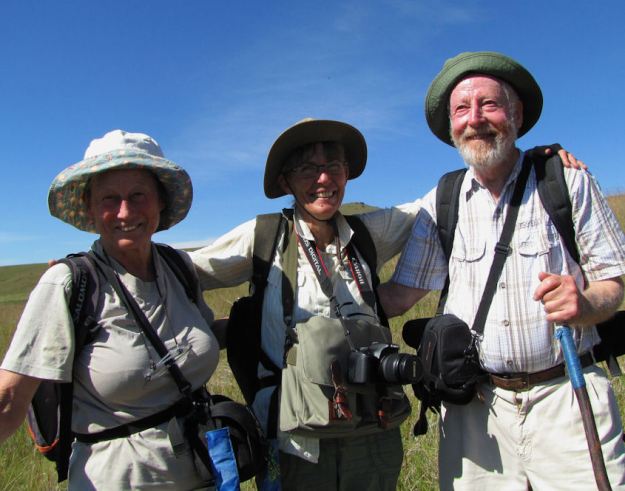
The reserve centre lies 11 km due south of Impendle town, and about 50 km west of Pietermaritzburg. It took about an hour to get there from Howick. The terrain is undulating, steep and rocky at the highest points, and dissected with small river drainage lines that fall over a minor escarpment as they join the Umkomaas River, which forms much of the site’s southern boundary. Altitude range is 935–1 586 m. The site is predominantly grassland (about 2 000 ha). Most of this is Highland Sourveld, with some Southern Tall Grassveld remaining. In its pristine state, this grassland should be dominated by Red Grass Themeda triandra, but the scarcity of this grass indicates that the site has been man-modified in the past – we saw plenty of Aristida and Paspalum.
We headed up the hill from the carpark. There are no paths, so we simply waded through the grass, finding treasures as we went.
The first discovery was Satyrium macrophyllum – shown off beautifully against the dry gold grass
then Alectra sessiliflora, which is flowering profusely in the Midlands this year.
We stopped to photograph everything! Christeen took all the fabulous flower photos in this post.
We saw Disa fragrans, Helichtrysum adenocarpum, Monocymbium ceresiliforme, Habernaria lithophila, Helichrysum glomeratum, Becium obovatum subsp. obovatum var. obovatum.
Eucomis autumnalis, Veronia natalensis, Searsia (Rhus) discolour, Vigna vexillata, Pachycarpus sp (not in flower), Lobelia erinus, Schistostephium crataegifolium,
Satyrium longicauda (not in flower), Wahlenbergia cuspidata, Haberneria dregeana,
Barleria monticola, Sebaea sedoides (isivumelwane esikhulu), Hermannia gerradii – two plants spreading across the earth below the rocky area which was a first for David and Christeen and cause for much delight. Lobelia erinus
Leonotis intermedia, Striga elegans, Gladiolus sericeovillosus – this was Lindiwe’s favourite flower of the day.
Some things we really puzzled over, but half the fun is looking up, discussing and finding the answer.
This Senecio had us stumped. Peter thought it might be Senecio dreageana which is listed in the red Data book as vulnerable. He has posted it on iSpot – for assistance from other amateur Botanists – have a look: iSpot record If it is, it is pretty special – “It probably occurs at less than 10 locations, based on herbarium records and habitat maps. At least 67% of its grassland habitat has been transformed, and all remaining subpopulations are on small habitat fragments that are subject to ongoing degradation as a result of frequent fires, overgrazing, subsistence agriculture and the effects of fragmentation. Habitat loss has taken place over a period longer than three generations. Data on population size and trends are urgently needed.” We are uncertain and await specialist identification – it is so easy for us to be over enthusiastic and misidentify things, so we want to make sure.
Crassula pellucida, Kniphofia laxiflora (not flowering), Diospyrus lycoides (not flowering), Scolopia, Berkheya multijuga, Calpurnia sericia (not flowering), Kalenchoe persiflora, Hibiscus trionum,
Merwilla plumbea (not flowering), Cussonia paniculata (not flowering), Argylobium magenta (not flowering), Rhabdiosella calycina, Canthium mundianum (not flowering – stunted amongst rocks), Buchnera simplex,
Ziziphus (not flowering – stunted amongst rocks), Pelargonium luridum (not flowering), Ortholobium polystictum, Asparagus cooperi, Watsonia socium (a few still in flower), Aloe maculata (not flowering), Pimpinella caffra,
Dicoma anomala
Ayanda simply loved the wide opens spaces, the quiet and the views.
We couldn’t identify: Small yellow tubular flower with 5 fused petals. Fine 10cm long stem from ground. Tiny bracts. Anyone have any ideas?
Helichrysum cephaloideum, Zaluzianskia microsiphon, Gladiolus ecklonii,
We saw a couple of reed buck, lots of butterflies, found a porcupine quill and fell into a few aardvark holes. This tiny weevil was interesting
Greyia sutherlandii, Grewia occidentalis, Halleria lucida, Scolopia mundii, Schizoglossum bidens (with fruit), Dicomis autumnalis, Eulophia sp (seed pods and caterpillar)
We were very excited to find Bowiea volubilis amongst the Dolerite rocks on the ridge as it is on out Target Species list of Threatened species to look out for. The Red Data list tell us that it is under severe threat from harvesting for the medicinal plant trade.
We also thought we spotted Anenome fanninii (another from our list) in the valley. Impendle holds one of the largest populations of Blue Swallow remaining in South Africa, however we only visited the Northern slopes, not the area where they nest.
The reserve consists of a series of farms that were first settled by colonists over 100 years ago. Most of the land was devoted to cattle grazing, but small areas have been used for crops. The farms were purchased in the late 1970s by the government for the purpose of consolidating the old KwaZulu homeland. They have been uninhabited since 1980. The value of this Trust Land to conservation was recognised in 1983 with the proposal to formally convert the area into Impendle Nature Reserve. Ezemvelo KZN Wildlife has been the management authority for the reserve since 1994.
Should you wish to visit, you need to make arrangements before you go or you may find the gate locked. Call Michael Ngubo, 072 542 3049 or Nicholas Mndaweni, 082 518 8219. The Officer in Charge is Mbuyiselo Gxashi – his email address is gxashim@kznwildlife.com
